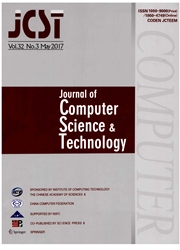

 中文摘要:
中文摘要:
计算机建筑学是从进在薄片上联网存取分享的资源的异构的体系结构在使用的异构的时代的 multicore 时代的 transiting,一个网络怎么被设置,将多半在全面性能和电源消费上有重要影响。最近,薄片(NoC ) 上的异构的网络被建议了不仅与缓冲路由器完成比得上 NoCs 的性能而且减少缓冲区费用和精力消费。然而,为异构的 GPU 中央处理器体系结构的异构的 NoC 设计没深入地被学习。这份报纸首先评估性能和许多静态的热土豆的基于的异构的 NoCs 的电源消费与不同缓冲并且无缓冲区的路由器放置,它是有用的为异构的 GPU 中央处理器互联探索设计空格。然后,它建议单向性的流动控制(UFC ) ,为在到控制网络拥挤的 GPU 中央处理器体系结构的异构的 NoC 的简单基于信用的流动控制机制。UFC 能保证总是在缓冲路由器有没有住的条目收到来自邻近的无缓冲区的路由器的迁徙。我们的评估看那什么时候与热土豆的路由相比, UFC 由 14.1% 的一般水准改进性能,精力仅仅由 5.3% 的一般水准增加了。
 英文摘要:
英文摘要:
Computer architecture is transiting from the multicore era into the heterogeneous era in which heterogeneous architectures use on-chip networks to access shared resources and how a network is configured will likely have a significant impact on overall performance and power consumption. Recently, heterogeneous network on chip (NoC) has been proposed not only to achieve performance comparable to that of the NoCs with buffered routers but also to reduce buffer cost and energy consumption. However, heterogeneous NoC design for heterogeneous GPU-CPU architectures has not been studied in depth. This paper first evaluates the performance and power consumption of a variety of static hot-potato based heterogeneous NoCs with different buffered and bufferless router placements, which is helpful to explore the design space for heterogeneous GPU-CPU interconnection. Then it proposes Unidirectional Flow Control (UFC), a simple credit-based flow control mechanism for heterogeneous NoC in GPU-CPU architectures to control network congestion. UFC can guarantee that there are always unoccupied entries in buffered routers to receive flits coming from adjacent bufferless routers. Our evaluations show that when compared to hot-potato routing, UFC improves performance by an average of 14.1% with energy increased by an average of 5.3% only.
 同期刊论文项目
同期刊论文项目
 同项目期刊论文
同项目期刊论文
 期刊信息
期刊信息
